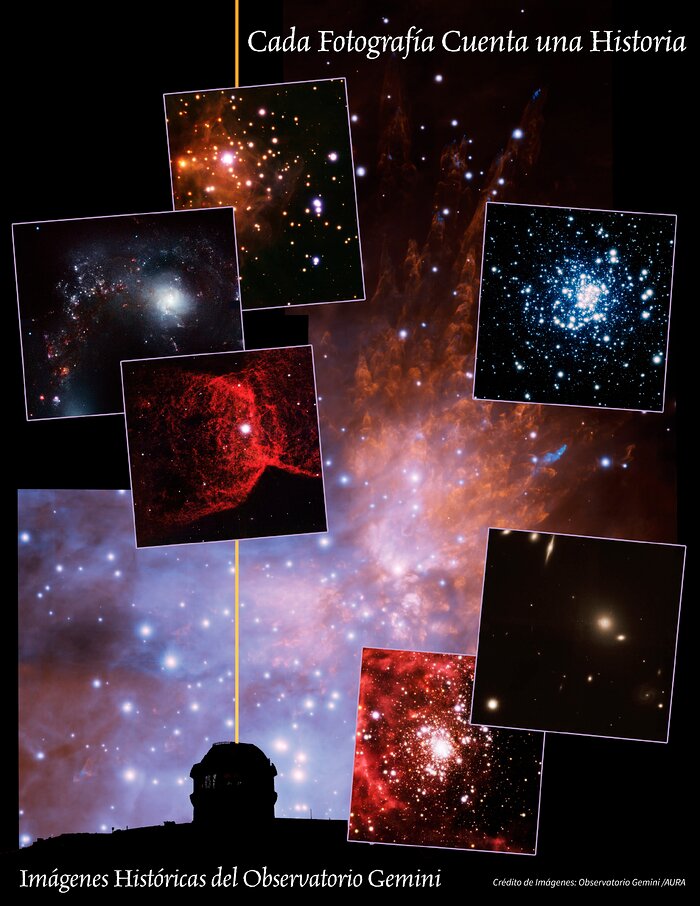
International Gemini Observatory
Every Picture Tells a Story
This montage is a tribute to a unique instrument at Gemini South known as the Gemini Multi-conjugate adaptive optics System (GeMS). When coupled to the Gemini South Adpative Optics Imager (GSAOI), GeMS can make Gemini’s 8-meter mirror significantly more efficient by focusing light more precisely — allowing astronomers using Gemini to probe objects more deeply and study them in finer detail. The image at bottom shows the Gemini South dome with the GeMS laser propagating into the sky. We see the dome silhouetted against a GeMS image of the Orion Bullets; these wake-like features in the Orion Nebula are clumps of gas violently ejected from a cluster of new and massive stars. The six other images (insets; all seen in unprecedented detail) are identified below, counterclockwise from left: NGC 2346: The gaseous remnant of a Sun-like star, known as a planetary nebula. NGC 4038: One of the components of the Antennae Galaxies — probably the most recognized pair of interacting disk galaxies in the sky. RCW 41: A star-forming region harboring a massive star cluster surrounded by dust and gas. NGC 1851: An ancient globular star cluster some 40,000 light years from our Sun. Abell 780: A deep look into a cluster of galaxies 840 million light years distant. And R 136: A star cluster and nebula, and a local analog to starburst clusters in distant galaxies. Download printable PDF 2.9MB